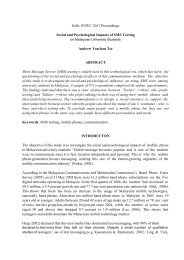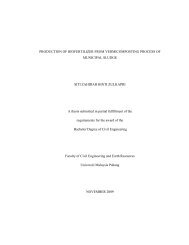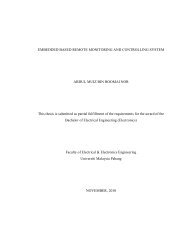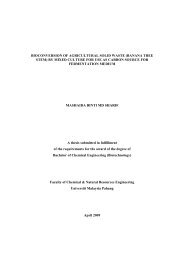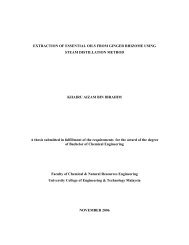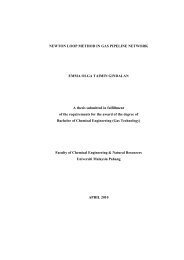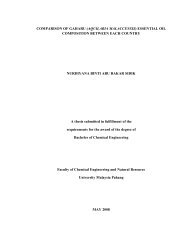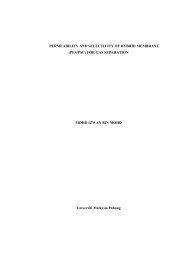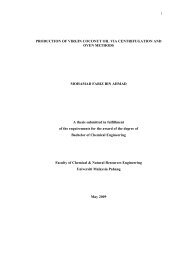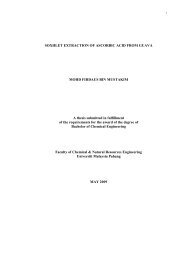CHAPTER 1 - Universiti Malaysia Pahang
CHAPTER 1 - Universiti Malaysia Pahang
CHAPTER 1 - Universiti Malaysia Pahang
Create successful ePaper yourself
Turn your PDF publications into a flip-book with our unique Google optimized e-Paper software.
manufacturing is to have elementary fibre, not technical fibre, as the reinforcement in<br />
the composite. On the other hand, using technical fibres or textile yarns, it is possible<br />
make long fibre composites with predefined fibres orientation. However in both<br />
cases the basic problem is fibre/matrix adhesion.<br />
All the plant fibres are hydrophilic in nature. That is because of their<br />
chemical structure the hemicelluloses and the pectin are very hydrophilic. In<br />
contrary, many of the common matrix polymers in composites are largely<br />
hydrophobic in nature. Only thermosets such as phenol formaldehyde and related<br />
polymers are less hydrophobic and are therefore less problematic. This discrepancy<br />
can lead to the formation of ineffective interfaces between the fiber and matrix.<br />
Problem can be solved applying different fiber treatments (both chemical and<br />
mechanical) or modifying chemical composition of the matrix. Unfortunately,<br />
surface treatments have a negative impact on economical aspect of NFC<br />
manufacturing. There are many publications reporting that properties of PP based<br />
composites are improved using maleic anhydride grafted PP (MAPP) as matrix<br />
additive. The same MAPP, acetilation and stearic acid treatment are used for fiber<br />
processing. Adhesion increases also after boiling of the flax fibres. For epoxy resin,<br />
alkali (NaOH), silane (3-aminopropyltriethoxysilane), isocyanate (phenyl<br />
isocyanate), urea and other treatments can be employed. Acrylic acid and vinyl<br />
trimethoxy silane of different concentrations are considered for several other<br />
thermosets. (M. Janarthanan et al., 2007)<br />
This paper gives an over view of natural fiber reinforced composites, the<br />
advantages of using natural fibres, the problems faced with natural fibres and ways to<br />
improve adhesion.<br />
11



